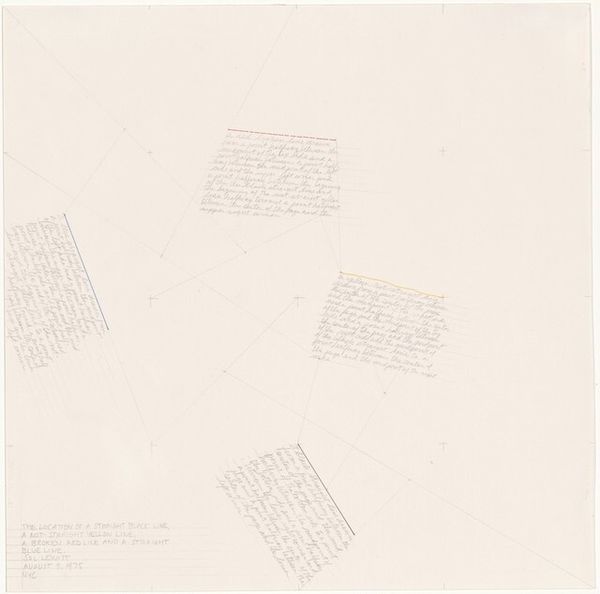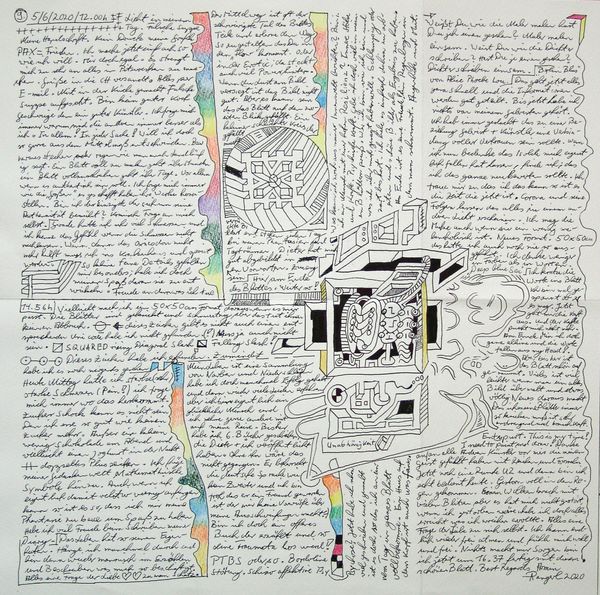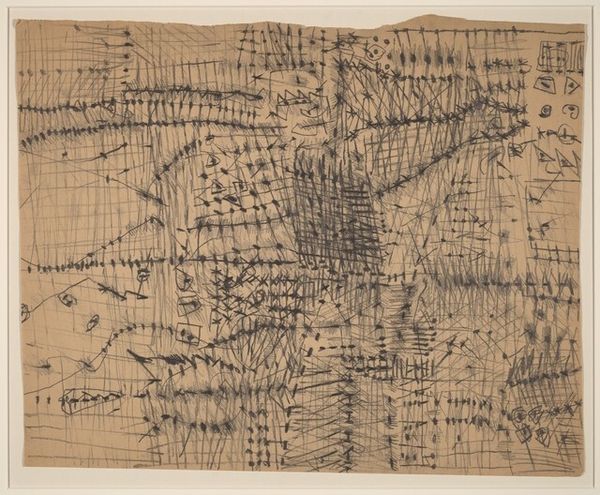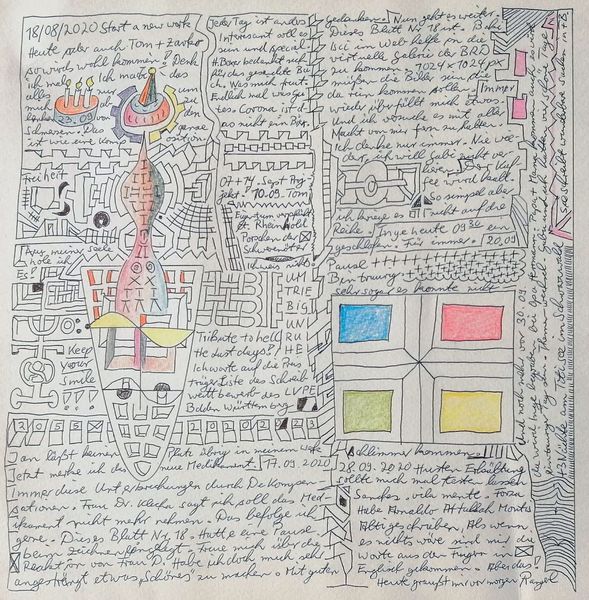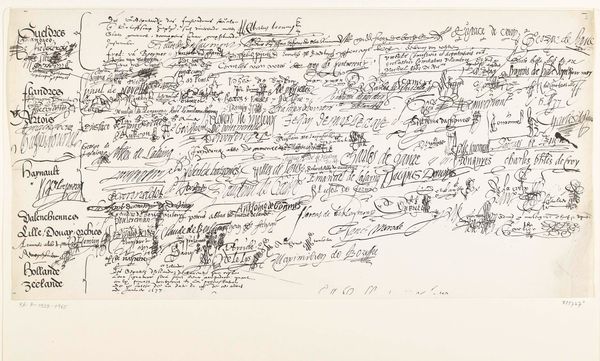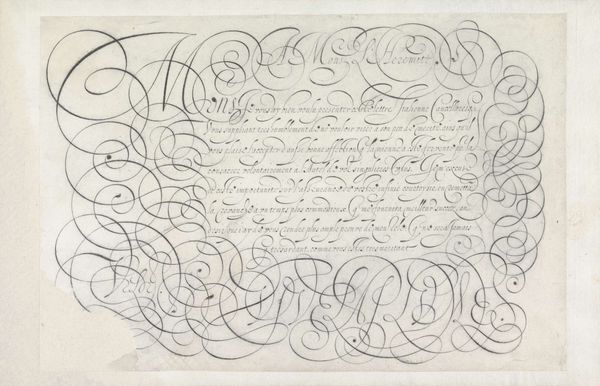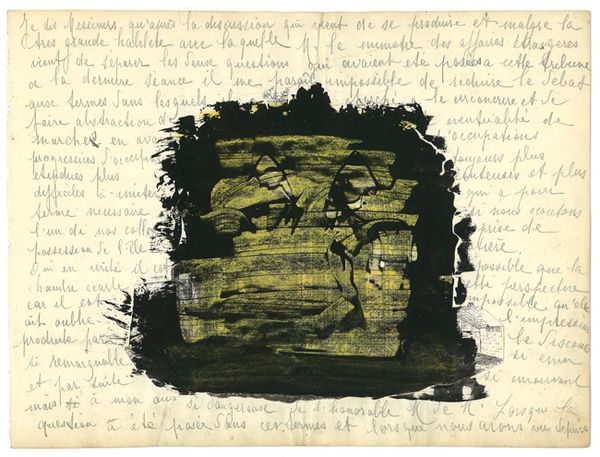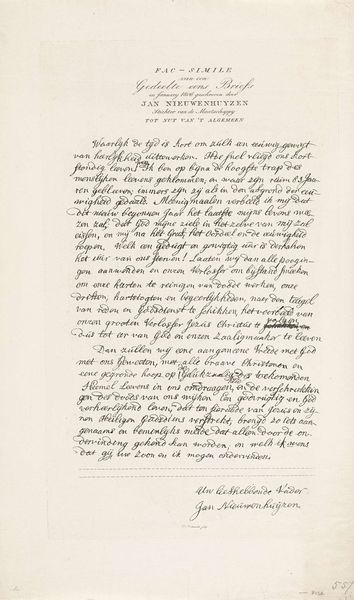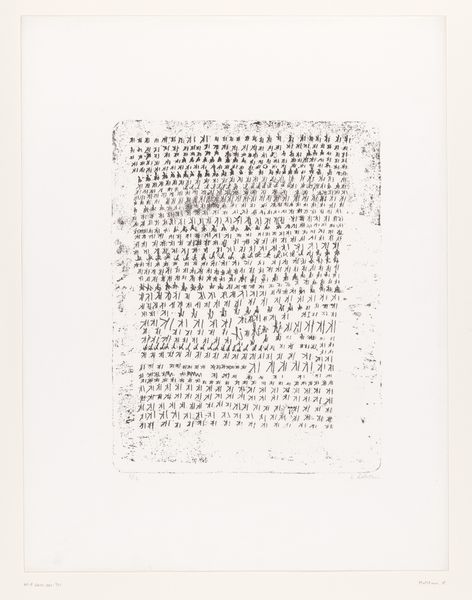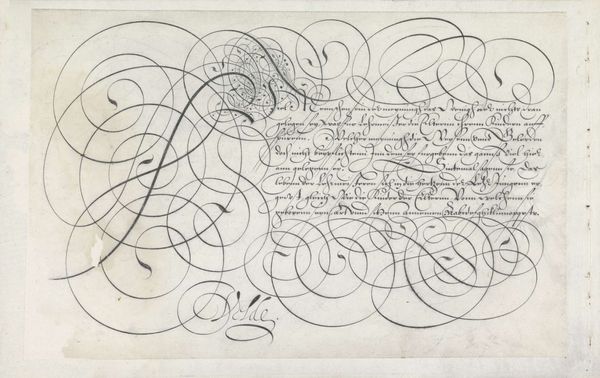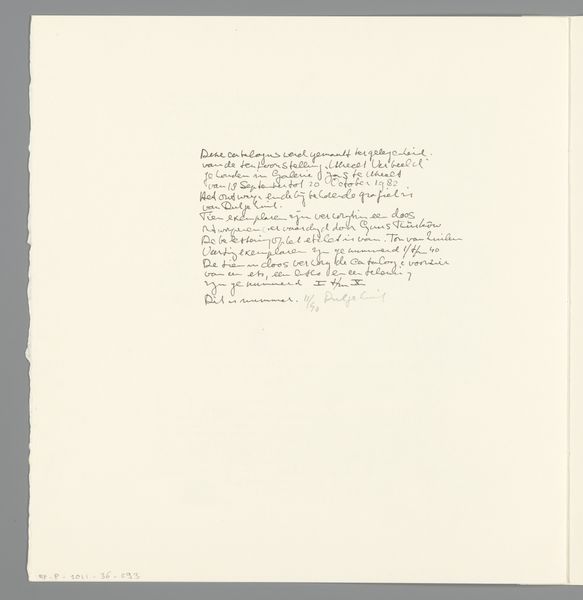
drawing, ink
#
drawing
#
conceptual-art
#
minimalism
#
text
#
ink line art
#
ink
#
hand drawn
#
geometric
#
pen-ink sketch
#
thin linework
#
line
Copyright: Sol LeWitt,Fair Use
Editor: Here we have Sol LeWitt's "The Location of 14 Points," created in 1975 with ink on paper. It's quite busy, with geometric lines overlaid on seemingly random handwritten text. What do you see in this piece, beyond just the visual chaos? Curator: Chaos is an interesting starting point. I see a rigorous system attempting to grapple with, perhaps even contain, something inherently fluid: language itself. Look at how the lines dissect and frame the text, imposing order on what might be diary entries or fragmented thoughts. It evokes a sense of surveillance, of mapping the intangible. What does the intersection of personal narrative and rigid structure tell us about the society, say, of 1975? Editor: Surveillance? That's a strong word. I hadn’t thought about it like that. I just saw geometric abstraction mixed with text. Do you think there is a commentary about the relationship between public and private? Curator: Absolutely. Conceptual art often engages with those boundaries. The geometric forms – simple, almost bureaucratic – attempt to codify subjective experience. Think about how systems of power categorize and control individuals. LeWitt, I believe, is making that power dynamic visible. He transforms the personal into data points. But let's consider this more specifically: whose experiences get codified, whose get erased? Editor: So it's less about the math and more about what the math *does*? A little like Foucault’s ideas? Curator: Precisely. Think about the panopticon. Or, more broadly, how knowledge systems are constructed to legitimize specific narratives. This piece invites us to critically examine what those narratives are, who benefits from them, and what gets left out. How would our understanding shift, do you think, if we knew who wrote those texts, their gender, their race, their class? Editor: That puts everything in a completely different light. I initially just saw lines and text but now I'm considering it in a socio-political context. I think I understand this much better now. Curator: Excellent. Art becomes truly potent when it pushes us to see beyond the surface, to engage with the complex interplay of power and representation.
Comments
No comments
Be the first to comment and join the conversation on the ultimate creative platform.
